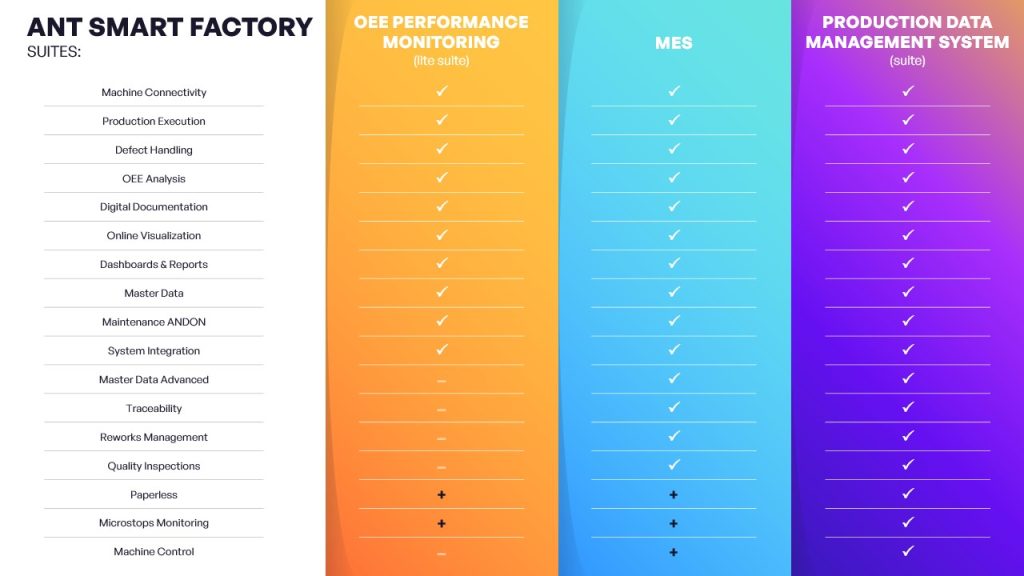- Assess your current digitalization level: This is important because it will help you determine what areas need the most improvement and how much work needs to be done. A low level of digitalization may mean that you need to start with some basic steps, such as implementing a data management system or automating some manual tasks.
- Determine your budget and goals: This will help you stay on track and make sure that your strategy is realistic. A low budget may mean that you need to focus on a few key areas or implement your strategy in stages.
- Develop a plan and timeline: This will help you keep track of your progress and make sure that you are on schedule. A short timeline may mean that you need to focus on the most important tasks and get them done quickly.
Digitalisation makes it possible to build and maintain a company’s competitive position in the market. The automation of processes and the use of IT systems for production planning and control were the main ideas of Industry 3.0. However, Industry 4.0, the concept that dominates the current reality, includes much more advanced issues related to the use of artificial intelligence, traceability and communicability of objects for more efficient implementation of production and business processes. The digitalisation of the factory requires a well-thought-out operational strategy. How to build it? And is it worth doing it yourself?
Current level of digitisation of Polish factories
Digital transformation is one of the key points in the realisation of Industry 4.0. And although many manufacturing companies have been making progress in this direction in recent years, it appears that there is still a lot of work to be done in both the local and global market. What does the current level of digitalisation of Polish factories actually look like?
One of the documents discussing the issue of the current state of the digitalisation of manufacturing in Poland is the report ‘On the way to the factory of the future in companies in the manufacturing market’, produced by NTT Data Business Solutions in April 2022. The study was based on interviews with production heads and digitalisation and IT managers. More than 50 per cent of those surveyed work in factories with an annual revenue of more than PLN 100 million. From this report we can learn, among other things, that:
-
- 90% of companies with revenues of more than 50 million use an ERP system.
-
- An MES system is implemented by only 38% and a WMS by 39% of manufacturing sites.
-
- Fewer than 50% of companies include digital transformation in their business strategy and only 15% plan to include it.
-
- Among companies that have included digital transformation in their business model, only 51% have a team designated to lead digital transformation activities. As many as 29% of companies do not even have a single employee responsible for leading these activities.
-
- Digitalisation is a priority for production facilities:
-
- paperless,
-
- real-time tracking of production execution,
-
- cost analysis.
-
- Digitalisation is a priority for production facilities:
-
- Some of the key areas of digitisation in manufacturing are:
-
- process automation,
-
- integration of all processes through a single solution.
-
- Some of the key areas of digitisation in manufacturing are:
-
- One of the biggest challenges in developing a digital factory is the lack of a coherent strategy and the lack of knowledge and competence of those responsible.
So, as you can see, the key points include such basic issues as automation or traceability. Many companies at this point do not even consider plans for production scheduling or tracking flows within warehouse management, which are also important steps on the road to the smart factory.
Digital factory development strategy in 3 steps
The costs of implementing digital transformation solutions are high, but should be treated as a multi-year investment. By opting for the support of proven system providers for the digitalisation of production, factories can avoid the risks associated with a lack of knowledge, skills and competence within the organisation in terms of strategy development and implementation.
How to create such a strategy? Important considerations include determining the current level of digitalisation of the company, the most urgent needs, as well as the financial and technical capabilities of the plant. On this basis, the optimal solution is selected. The first task should be to appoint a person or team responsible for the results related to the digitisation of the factory.
In order to establish an effective strategy, it is worth asking yourself a few questions at the outset:
-
- What is the timeframe for the project?
-
- What is the budget?
-
- What outcome must be achieved to consider the finished project satisfactory?
-
- Who will be involved in the factory digitisation project and how?
Technical issues should also be borne in mind:
-
- What areas in the factory need improvement?
-
- Is (and how) data currently being extracted from the machines?
-
- What is the current OEE?
-
- Which KPIs, standards and regulations are most important?
And how do you know how to locate areas for improvement? You will find many of them in our comprehensive Guide to Digitising Your Factory. From it you will also learn more about strategy and implementation of digital solutions for production.
At ANT, we create flexible and scalable solutions. The modular design allows us to create a solution that is ideally suited to the current needs of the factory, and then expand as the factory grows. The software can be expanded with further modules to raise the level of sophistication of the system. We base our factory digitisation strategy on 3 steps.

Step 1: OEE monitoring
The first element of the digital factory development strategy is the implementation of OEE monitoring software. Thanks to the communication with the machines that takes place with the help of sensors, production data goes straight into the system. Based on the generated reports and the Pareto chart, it is possible to locate the most important, most recurring problems that are the cause of production delays and errors.
OEE monitoring allows performance to be tracked and areas for improvement to be identified. Production reports are automated and digital.
Step 2: Implement a production management system
The MES system is an advanced production management solution. It guides the production process through all its stages: planning, scheduling, monitoring, supervision, execution and optimisation. In a second step, the software is extended to include functions such as traceability, rework management or quality control. Real-time production tracking allows production status to be monitored in real time and immediate action to be taken to increase productivity.
The MES system allows OEE to be increased and errors to be eliminated, while the traceability function guarantees control over process flows.
Step 3 Implement a production data management system
The PDMS system is the most advanced version of the ANT software. It allows production processes to be managed, the work cycle process to be modelled and orders to be sent from the system directly to the machines. In this step, the software is extended to include functions such as paperless, machine control or micro-stop monitoring.
The PDMS allows a digital documentation workflow to be introduced and the forms are filled in automatically. By analysing micro-breaks and the MTBF per machine or component, machine uptime is extended.
Benefits of adopting an ANT-supported digital factory development strategy
ANT helps factories realise priority measures for the digitalisation of production, such as paperless, traceability, automation and the integration of all systems in a single software. The solution offered is scalable and flexible – the configurable platform is adapted to the individual needs of each customer. Expert support eliminates the risk of taking ill-considered, unprofitable steps towards digitalisation. Step by step, ANT guides the factory through the digital transformation process – efficiently and effectively.
Related to this article

Why ANT – Production Software for Modern Factory
WHO WE ARE? For 18 years, ANT Solutions has been revolutionizing manufacturing with cutting-edge MES technology. With over 800 successful projects completed in 37 countries,

MES System – Manufacturing Execution System – ANT Solutions
System MES – Manufacturing Execution System 0 % operating time increase 0 % defects quantity reduction 0 % material consumption reduction 0 % changeovers time

Manufacturing Operations Management System (MOM)
Manufacturing Operations Management System (MOM) The most complete manufacturing solution with full support for operations management and a link between industrial automation and business operations

